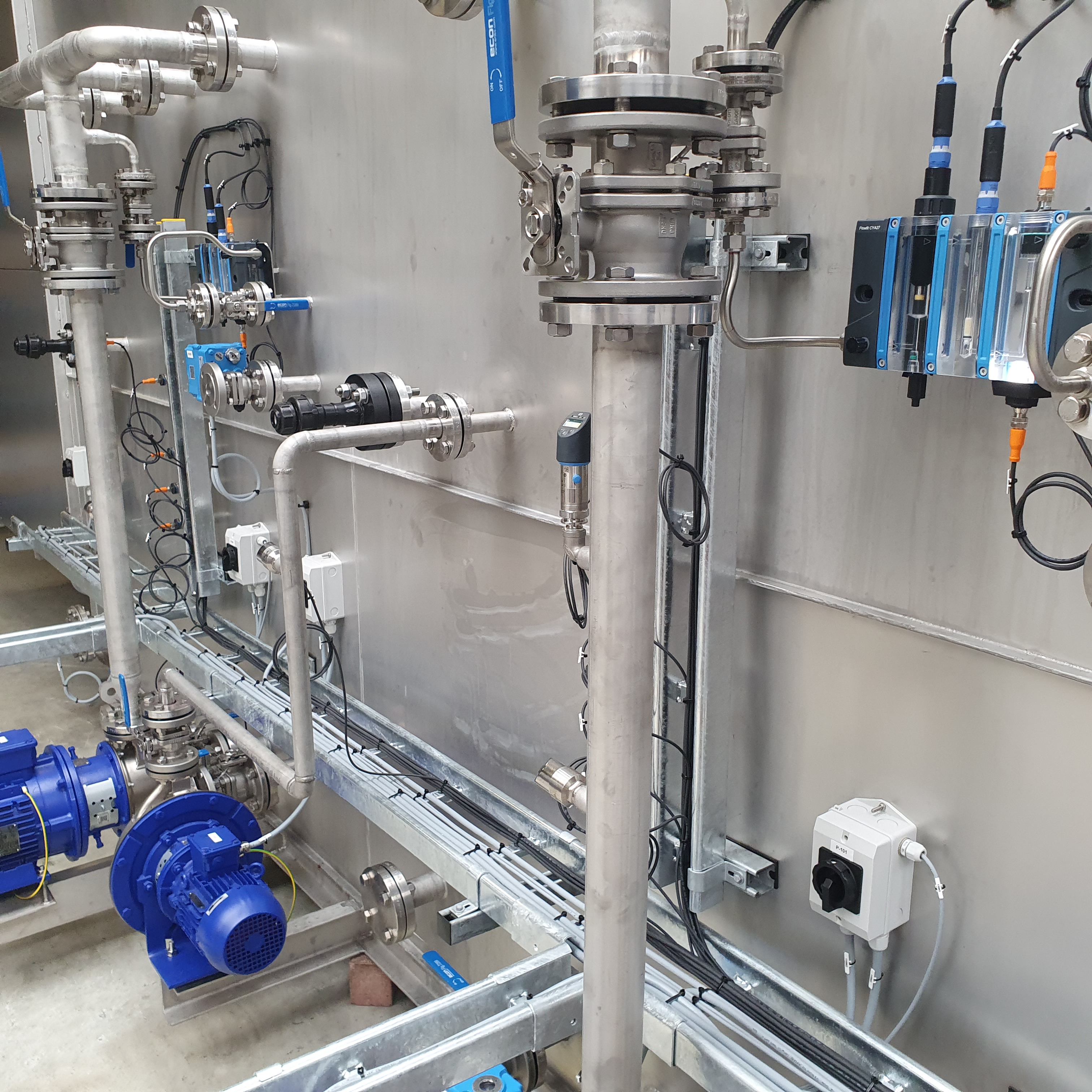Gas Composition from Production Hall Extraction Systems: Butyrate, Particulates, and Hydrocarbons
 The gas originates from several extraction systems within the production hall. It contains an indeterminate quantity of butyrate, as well as particulates and vapors derived from butyric acid. Furthermore, during peak load conditions, it may carry up to 50 ppm of (volatile) hydrocarbons.
The gas originates from several extraction systems within the production hall. It contains an indeterminate quantity of butyrate, as well as particulates and vapors derived from butyric acid. Furthermore, during peak load conditions, it may carry up to 50 ppm of (volatile) hydrocarbons.
Design and Installation of a High-Capacity Counterflow Scrubber System with Siemens S7-1500 PLC Automation
The design, manufacture, delivery, and installation of a complete counterflow scrubber system (horizontal configuration, suitable for outdoor placement) is specified for a process gas flow with a minimum throughput of 12,000 Am3/h and a maximum throughput of 20,000 Am3/h. This scrubber system will be equipped with pumps, instrumentation, valves, and dosing devices. The automation, based on a Siemens S7-1500 PLC, will be housed in a Rittal control cabinet. The counterflow scrubber features a horizontal, rectangular casing made from AISI 316L stainless steel. In counterflow washing, the washing liquid and the gas to be purified move in opposite directions. A significant advantage of counterflow washing is that as the gas becomes cleaner, the concentration of contaminants in the washing liquid decreases. This mechanism ensures that the cleaning process remains highly effective throughout the operation of the system.
Get in touch with us
Process Conditions (Design Data)
| Gas Flow Rate (Current) | : | 12,000 – 20,000 Am³/h |
| Operating Temperature | : | 21 °C |
| Operating Pressure | : | Approximately atmospheric |
| Total Suspended Particulate Concentration (TSP) | : | 1.86 mg/m³ |
| Dust Load | : | 9.11 g/h |
| Average Odor Concentration | : | 15,150 OUE/m³ |
| Average Odor Load | : | 13,126 OUE/s |
| Concentration of Butyric Acid | : | 17.23 mg/m³ |
Additionally, there are several esters and aldehydes with high odor activity values, including ethyl butanoate, butyl butanoate, 2-methylpropanal, butanal, and 3-methylbutanal.
